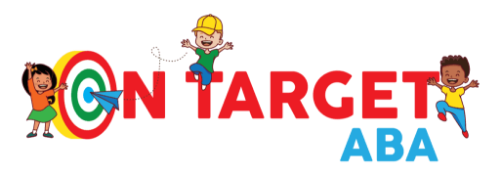🧠 AI Summary:
This article explores how modern technology is revolutionizing ABA therapy for children with autism, making learning more engaging, data more precise, and progress easier to track. Parents will discover how digital tools, apps, telehealth platforms, and interactive devices empower both therapists and families. The post also highlights how On Target ABA integrates technology into therapy without losing its compassionate, human-first approach — ensuring every child learns in ways that are both meaningful and motivating.
Introduction: When Innovation Meets Compassion
Technology is everywhere — in our homes, schools, and even our daily routines. But in the world of autism support, it’s doing something extraordinary: it’s helping children communicate, learn, and grow like never before. 🌈
At On Target ABA, we embrace technology in ABA therapy as a way to make learning fun, track progress accurately, and strengthen collaboration between families and therapists. While screens and apps can’t replace human connection, they can make therapy more accessible, personalized, and engaging.
Let’s explore how innovation is transforming ABA therapy — and how it’s shaping brighter futures for children with autism.
The Role of Technology in Modern ABA Therapy
ABA therapy has always been data-driven, but technology takes that precision to new heights. Digital tools now help therapists:
- Record progress in real time
- Visualize trends in skill growth
- Adjust teaching strategies instantly
These advancements not only improve accuracy but also allow for more personalized learning experiences tailored to each child’s pace and preferences.
How Technology Enhances ABA Therapy Sessions
1.Interactive Learning Tools
Educational apps, tablets, and digital games keep kids engaged and motivated.
Therapists use technology to teach:
- Matching and sorting tasks
- Speech imitation and comprehension
- Emotional recognition through animated visuals
Children who may struggle with traditional methods often thrive when learning feels like play.
2.Data Collection and Progress Tracking
Gone are the days of paper charts!
Modern ABA software systems track:
- Behavior frequency
- Skill mastery levels
- Reinforcement schedules
- Session notes and visual graphs
This allows therapists and Board Certified Behavior Analysts (BCBAs) to make informed, data-based decisions quickly — ensuring every goal stays on target.
3.Telehealth ABA: Breaking Barriers to Access
Telehealth has opened doors for families who live far from therapy centers or have limited mobility.
Through secure video sessions, children can:
- Continue therapy from home
- Stay consistent during travel or illness
- Maintain connection with their therapy team
At On Target ABA, telehealth ABA programs are designed to mirror the same structure and quality as in-person sessions — combining technology with human warmth and interaction.
4. Augmentative and Alternative Communication (AAC) Devices
For non-verbal or minimally verbal children, technology literally gives them a voice.
Speech-generating devices (SGDs) and tablet-based AAC apps help children:
- Express needs and emotions
- Build vocabulary
- Participate in daily interactions
These tools create independence and reduce frustration, empowering children to connect confidently with their world. 💬
5. Video Modeling and Visual Supports
Video modeling allows children to learn by watching short, structured examples — such as greeting someone or washing hands.
When paired with visual schedules or picture cues, children gain confidence in routines and transitions.
At On Target ABA, therapists often combine these methods to help children understand expectations visually, reducing anxiety and improving outcomes.
Making Learning Fun and Meaningful
Technology brings excitement to therapy sessions while reinforcing skills in creative ways:
- Gamified reinforcement systems: Children earn tokens or stars for completing goals.
- Interactive visuals: Animated feedback rewards attention and persistence.
- Custom playlists: Music and sensory apps encourage calm and focus.
When learning feels rewarding, progress feels natural — and children stay motivated to keep trying.
Empowering Parents with Technology
Parents play a vital role in therapy, and technology helps bridge the gap between clinic and home.
Families now have access to:
- Progress dashboards that show real-time growth
- Parent training videos for skill reinforcement
- Secure communication platforms to message therapists or track daily reports
💙 These tools allow parents to stay informed, involved, and inspired by their child’s journey — every step of the way.
How On Target ABA Uses Technology Responsibly
While technology enhances ABA therapy, it’s never a replacement for empathy or human connection.
At On Target ABA, we:
- Use digital tools to support therapy, not dominate it
- Ensure screen time remains purposeful and balanced
- Prioritize engagement, play, and real-world practice
Every click, app, or device is chosen to make therapy more effective — without losing the warmth that defines our care.
The Future of ABA Therapy: Smart Tools, Human Hearts
The future of ABA will likely include more AI-driven analytics, virtual-reality social skills programs, and adaptive learning apps.
But no matter how advanced technology becomes, the foundation will always stay the same: human connection, compassion, and individualized care.
At On Target ABA, we’ll continue leading with both — using technology as a bridge, not a barrier, to connection.
Conclusion: Technology That Empowers, Not Replaces
Technology doesn’t change what ABA therapy stands for — it strengthens it.
By combining innovation with empathy, we’re helping more children build communication, confidence, and independence.
At On Target ABA, we believe progress happens when science and compassion work together — and the future of ABA therapy is brighter than ever. 💙

